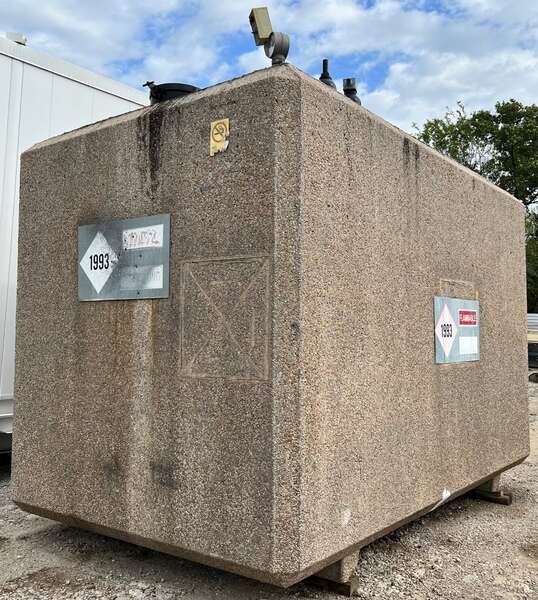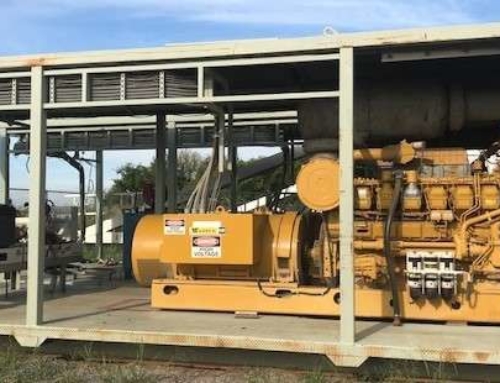What would happen if a power outage lasted longer than expected? Without an appropriate amount of fuel, the entire purpose of the generator is rendered futile. Here’s when diesel fuel storage tanks for generators come in handy.
The fuel is stored in generator fuel tanks to avoid such an eventuality. So when your business facility faces a power outage, the generator utilizes the diesel stored in the fuel tanks to generate power.
There are different types of generator fuel tanks with varying capacities. Several factors need to be considered for choosing the right diesel generator fuel tank that matches the needs of your generator and facility.
Keeping that in mind, let’s learn about the types of fuel storage tanks and how to determine the required tank capacity.
Table of Contents
How to Determine the Generator Diesel Tank Capacity?
To determine your fuel tank capacity, you’ll first have to calculate the amount of fuel you need to store. The following three parameters can help in estimating the minimum fuel storage capacity:
- Lead-Time: How much time is needed to buy fuel from the vendor and deliver it to the generator site?
- Emergency Stock: The amount of fuel required in case of an increase in consumption or delay in supply.
- Lead-Time Stock: The fuel needed for the generator to operate during the lead time.
Depending on the parameters mentioned above, you can calculate the minimum fuel storage requirement using this formula:
Minimum Fuel Storage Capacity = Emergency Stock + Lead-Time Stock
What is the Optimum Generator Diesel Tank Capacity for You?
You can opt for small fuel storage tanks for infrequent power outages with short durations. However, this will require you to regularly buy fuel in small lots to refill the tank more often. Though the initial set-up and maintenance cost will be lower, you will incur a higher delivery cost per unit of fuel.
You can opt for large fuel storage tanks for large establishments with frequent power outages that last longer. In this scenario, you can buy fuel in bulk less frequently. This reduces the delivery cost per unit of fuel as huge quantities can be purchased in one go. However, you will incur higher initial set-up and maintenance costs.
In addition, you also need to factor in the hidden costs arising from the risk of storing huge quantities of fuel.

Types of Generator Fuel Tanks
There’s no one solution when it comes to generator fuel tanks. Choosing the right tank type depends majorly on the specific needs of your business facility. Let’s discuss the types of fuel tanks for generators.
1. Underground Generator Fuel Tank
Underground storage tanks can store more than 1,000 gallons of fuel. These tanks last longer as they are shielded from environmental factors. Though installing such tanks is costly, it is worth the expense.
Constructed from cathodically protected steel or fiberglass-reinforced plastic, these tanks are generally ribbed to gain structural strength. They require additional overfill and spill prevention equipment, as underground spillages and leakages can be quite problematic.
Concrete walls and floors surround underground tanks to enhance the spill-prevention mechanism. Once the tanks are installed within this area, gravel and sand pack the outer region.
2. Sub Base Tanks
Sub-base tanks are the most common types of generator fuel tanks that sit above ground but beneath the generator set’s base. They are the best option for storing less than 1,000 gallons of fuel. Sub-base tanks are usually double-walled and rectangular for additional protection against spillage and leakage.
Constructed using welded steel, these tanks are accompanied by the following fittings and piping:
- Fuel alarms (for high and low fuel levels)
- Air vent
- Fuel return and supply
- Emergency pressure relief valve
The filling system of the tank is built such that there is no spillage at the time of filling. It also features an inlet valve that closes automatically when the tank reaches 95% of its capacity.
3. Above-Ground Storage Tanks
Above-ground storage tanks have a similar construction as underground tanks. However, their installation process differs as they are installed above the ground.

These tanks pose a fire hazard and are installed at a significant distance from other human-occupied facilities. Dikes are built around these tanks to contain leakages and spills.
The volume of the dike must be more than the total tank capacity (usually 110% of the tank volume). Above-ground storage tanks need suitable protective covers to shield them from weather conditions as they are exposed to environmental factors.
Wrapping Up!
As generators require a long-term and hefty investment, making a well-informed decision is critical. We hope this guide helps you decide which generator fuel tank is best for your facility.
Since modern generators come in various customizations, a professional consultation can go a long way in making the best choice.
If you’re looking for more information, contact Swift Equipment Solutions today! Our team of experienced professionals will help you make an informed decision.
FAQs
1. What are the considerations for diesel tank sizes?
Appropriate fuel tank size is critical to preventing the risk of spillage and overflow. To determine the required fuel gallon capacity, you’ll have to multiply the desired run-time by the generator’s fuel consumption rate. It is always best to refer to your generator specification sheet to ascertain the exact fuel consumption rate.
2. How to ensure safe installations of generator fuel tanks?
Several city, state, and federal fuel storage laws ensure safe fuel tank installations. As fuel is combustible, these regulations must be considered before installing the tank.
3. Which fuel type is the best for generators?
The fuel grade required for your generator depends majorly on your local climatic conditions. Grade #1 is perfect for cold climates due to its resistance to gelling. When gelling is not a concern, grade #2 diesel is an ideal choice due to its high energy output.
4. What are the code requirements for generator fuel tanks?
Many municipalities and towns have local code requirements for generator fuel tanks. For instance, some municipalities require you to have a minimum fuel tank level. Other code requirements include extended venting, fuel-spill containment, scheduled pressure testing, etc.






Leave A Comment